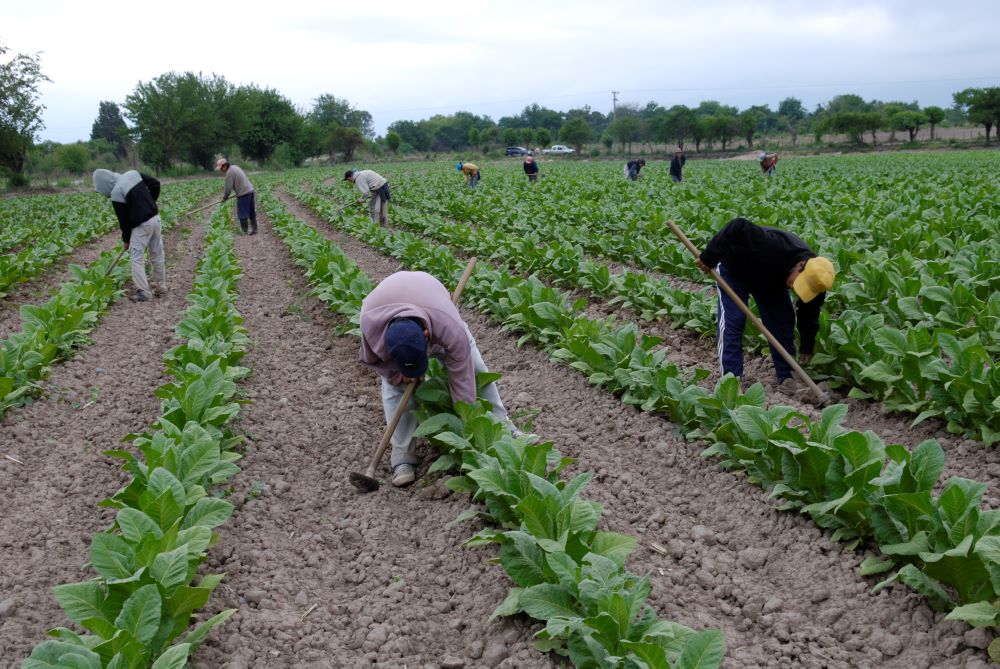
A Japanese government survey ‘reveals’ that nonsmokers find smoke unpleasant while smokers like it.
By George Gay
According to a recent government of Japan survey, about 83 percent of Japanese people aged 18 and older find tobacco smoke unpleasant. The Cabinet Office survey, reported by Kyodo News, questioned 3,000 people online and via email during August and September last year and resulted in 1,556 valid responses. Slightly more than 56 percent of respondents said they found tobacco smoke unpleasant while about 26 percent reported they found it “somewhat unpleasant.”
Such a survey probably cost the government relatively little, but, still, these are hard times, and I could have come up with the figure of 83 percent for free without bothering 3,000 people and while causing much less environmental degradation than the survey’s computer-based energy use would have caused and will continue to cause through the electronic storage of its results in multiple versions and places. You see, just a couple of clicks on the internet will turn up the fact that the smoking prevalence in Japan is about 17 percent.
I’m certain that I don’t have to explain my thinking here, but, just in case, let me underline it by saying the survey found that about 75 percent of men found tobacco smoke unpleasant while about 89 percent of women did so. And do you know what? The smoking incidence among men is about 27 percent while that among women is about 8 percent.
Let the heralds sound the trumpets! Nonsmokers find tobacco smoke unpleasant while smokers like it or are indifferent to it!
Or perhaps I should say that nonsmokers and nonvapers find smoke and heat-not-burn (HnB) vapor unpleasant. Japan is held up as an example of good practice when it comes to helping smokers switch to less risky forms of tobacco/nicotine consumption because, while its laws do not allow the use of electronic cigarettes that deliver nicotine, HnB devices are permitted and have gained much ground on the Japanese market. It is true that the survey report mentions only tobacco smoke, but I suspect that this is because many people are heavily into deeming things when they feel it convenient to do so. Smoke is vapor, and vapor is smoke, while a “smoke-free” country might have a smoking incidence of 5 percent and, in theory, a vaping incidence of 100 percent, even though vapor is considered to be smoke. You know the sort of thinking.
When times are hard, or even when they are not, it is surely difficult to justify a government’s expending resources on such a survey. Is it possible that anybody believes that anything meaningful can be discerned from asking 0.002 percent of Japan’s population whether tobacco smoke, as they perceive it, is unpleasant or somewhat unpleasant? Is there a difference even? Surely, if something is unpleasant, it is also somewhat unpleasant, and if it is somewhat unpleasant, it is also unpleasant. Remember, we are asking people with presumably varying perceptions to distinguish a degree of unpleasantness within a single entity; we are not asking them to compare different entities.
In the report I saw, it was not even clear to what unpleasant referred. Is it the look of the smoke? After all, tobacco smoke is one of the few air pollutants that is visible, and, if I am correct in assuming that vapor is deemed to be smoke, the sight of vapor would offend some. There are quite a lot of people, I have noticed, who become overwrought when vapers flaunt their exhalations. More likely, however, it is the smell of the smoke, but this would seem to reduce the value of the survey further. Haven’t we known for years the answer to the general question about whether Japanese people find tobacco smoke unpleasant? Isn’t it the case that the Japanese tobacco market is one of just a few where successful efforts have been made to sell cigarettes partly on the basis that they give off reduced tobacco smells? At one time, they were referred to in Japan, and might still be, as LSS (low smoke smell) cigarettes.
But these surveys are taken seriously—to what I would regard as almost ludicrous levels. The Kyodo report explained how the previous survey into attitudes to tobacco smoke, conducted in 2019, discovered that 78 percent found it unpleasant while warning that the results from 2019 and 2022 could not be compared because of changes made to the survey methodologies. Does any of this matter? Is there a need to know this stuff that outweighs the environmental harms being caused? When desktop printers first arrived on the scene, it became common for documents that appeared on computer screens to contain notes asking the recipients to think before they printed them. This was sensible, but now, has the time come to impress on people whether there is a need to carry out the research they are contemplating and whether it is necessary to see the results of that research disseminated and stored?
One of the major current debates is that around artificial intelligence (AI), often with conclusions being drawn without first defining what sort of AI is under discussion. As I understand things currently, I would welcome the takeover of humanity by AI if that AI were powered in all aspects by renewable energy, capable of self-replication and movement, had sensory systems at least as varied and efficient as those of humans and started its intellectual forays with no information inherited from its creators; or, if it were not possible to kick it off with no information, if it were supplied only with the three-volume Principia Mathematica on the foundations of mathematics by Alfred North Whitehead and Bertrand Russell.

Time to Move On
On the other hand, it would be a matter of deep concern to me if the AI that took over for humanity was not powered by renewable energy, not self-replicating, not capable of movement, had no or limited sensory systems and had its intellectual arteries clogged with the sorts of trivia—and here I would include the results of the survey under discussion—that is, in large part, the sum of the intellectual history of the human race. We, or our replacement AI, cannot move forward while dragging this history behind us. It would be like trying to replace an old and discredited product, such as a cigarette, with a proven, technologically advanced product, such as a vaping device, while shaking our heads and calling for more historical research into all the problems and tragedies that the old product caused previously. Let us move on. As far as is possible, let us start afresh.
Don’t get me wrong, I’m not picking on the government of Japan; it’s just that I was asked to write about the country and, in doing some reading, was intrigued by the story of the survey or, at least, an aspect of it. I was about to pass over the story, in fact, when my mind latched onto the unpleasant/somewhat unpleasant issue. Such efforts as were put into the survey in question are wasted everywhere, and such waste is not limited to governments. The amount of money wasted on pointless research must be astronomical. We have known for decades that smoking is bad for you and that the main offense given to nonsmokers by smokers is not the health risks associated with secondhand smoke but its smell, mainly the lingering smell given off by ashtrays and garments worn by smokers.
That’s not to say that the survey conducted in Japan did not serve a useful purpose. It provided the government with the assurance that it could mobilize the tyranny of the majority. “Although the government in April 2020 imposed a general ban on smoking in indoor spaces used by multiple people, nearly half of respondents answered they want stricter measures to stop secondhand smoking,” Kyodo reported. And of those wanting further restrictions, about 60 percent wanted them introduced in outdoor locations, such as streets and parks.
Now I don’t want to cause these people any unnecessary anxiety, but, according to earth.org, the biggest sources of air pollution in Tokyo, for instance, have nothing to do with tobacco smoke. They are down to vehicle emissions and factory fumes. The worst and most widespread form of this pollution is fine particulate matter, PM2.5, that gets deep into lungs and has deleterious health effects similar to those caused by cigarette smoking, including increased respiratory and heart disease occurrences.
Apparently, the effect of air pollution on people in Tokyo, depending on where in the city they operate, is equivalent to their smoking from 2.68 to 4.25 cigarettes a week. Now I would challenge any resident of Tokyo to smoke the equivalent of 2.68–4.25 cigarettes solely through the inhalation of secondhand smoke while out in the street or in a park. They would be pushing it to smoke the equivalent of a measurable fraction of a cigarette. So, if the government is worried about the health of Tokyo’s people, it should, rather than conduct surveys on people’s attitude to tobacco smoke, take action on … well, there is only so much free advice I am willing to give.
Navel Gazing
Of course, if you really want to waste your effort on surveys, there is no better way than navel-gazing. And the Japanese Cancer Association (JCA), while undoubtedly doing much good work, is also keen on conducting surveys of its own members. In February last year, as part of a piece entitled “Trends in smoking prevalence and attitudes toward tobacco control among members of the JCA 2004–2017,” it said that recently, use of new tobacco products, including HnB tobacco, had become prevalent among young people. “Tobacco industries advertise the lower risk of the product compared with cigarettes; however, long‐term risks and other potentially fatal risks are unknown,” it said. “To fight against a new enemy of tobacco control, our academic society should boost activities to study the risk of new tobacco products.”
Note that while many people, including those at the hard-to-convince U.S. Food and Drug Administration, believe that at least certain HnB devices can provide smokers with alternatives to traditional cigarettes that are less risky to consume than cigarettes, and while the JCA admits that the long-term effects of consuming HnB products are unknown, it has declared them an enemy of tobacco control.
In other words, we seem to be up against that form of “science” where the result is deemed, and the evidence sought to establish that result. This would be chilling even if it were confined to Japan, but the JCA has wider ambitions. “As a leader in the cancer research community, the JCA should take action to deal with the control of new tobacco products globally,” it said.

























































